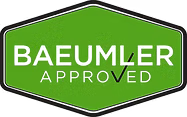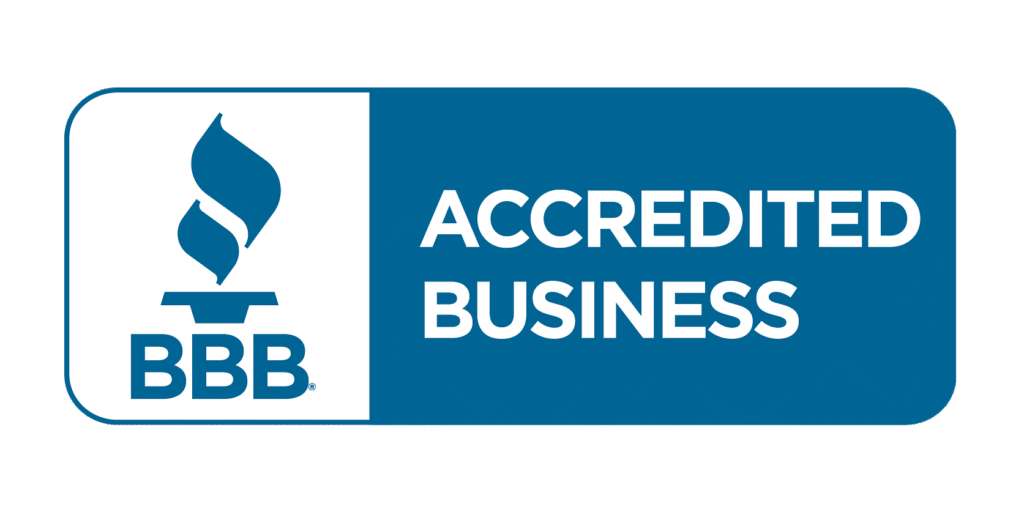Floods top the list of extreme weather events in Toronto. Homeowners need to understand their water damage insurance coverage and know how to handle claims to protect their property.
This blog breaks down the essential steps to take if floods have damaged your home. You’ll learn what your policy actually covers and get clear instructions to file your claim successfully. This information will help you manage claims and insurance with confidence.
Useful for current water damage or future issues. Insurance claims can be confusing and stressful, but we’ll make the process clearer.
What to Do Immediately After a Flood
Quick action after a flood can protect your safety and help with your water damage insurance claim. You need to act fast to safeguard your health and get the most from your insurance coverage. Here’s what you should do:
Stay safe and avoid re-entering damaged areas
Your safety comes first, above everything else. Wait for official confirmation before going back to your flooded home.
Floodwaters make buildings dangerous, so stay away from any structure with buckled walls or floors. Dangers can hide even after water levels drop – from contaminated water to unstable structures. You should wear protective gear like rubber boots, safety glasses, and gloves when checking your property. Note that water-soaked ceilings might collapse suddenly.
Turn off power only if safe to do so
Water and electricity create a lethal mix. You should not enter the basement if water has risen above electrical outlets, baseboards, or your electrical panel. Call your local electric utility to cut power to your home instead.
Standing water makes electrical equipment extremely dangerous. A certified electrician should check your electrical system before turning the power back on, even after floodwaters recede. This prevents fires and electrical injuries.
Document damage with photos and videos
Your water damage insurance claim needs proper documentation of all flood damage. Take clear, detailed photos and videos before moving anything. Make sure to capture:
- Room views from different angles
- Close-up shots of damage to walls, floors, and belongings
- Serial numbers on damaged appliances and electronics
- Water levels inside and outside your property
Upload these images to cloud storage like Dropbox or Google Drive to share with your adjuster easily. Good documentation makes your claim stronger.
Avoid discarding damaged items too soon
Your first impulse might be to throw away damaged items, but you should wait. Insurance adjusters need to see the actual damage to create an accurate repair estimate. Keep samples of damaged materials such as carpet, wallpaper, and flooring. You can dispose of items that pose immediate health risks, like spoiled food or soaked pillows – but take plenty of photos first.
Understanding What Your Insurance Covers
Filing an insurance claim after a flood can leave you confused, especially when you have to figure out what your policy covers. You need to learn about your coverage options to protect yourself against water-related disasters.
Overland flood vs. sewer backup coverage
These two different coverages protect you from different types of water damage. Overland water coverage helps protect your home from damage. It covers issues from freshwater sources like heavy rain, melting snow, or overflowing rivers. These can enter your home through ground-level points.
Sewer backup coverage protects you when sewage or wastewater backs up into your home through drains, floor drains, or septic tanks. Your standard policy doesn’t have either of these coverages—you need extra endorsements for both.
Is water damage covered by insurance?
Standard home insurance covers sudden and accidental water damage from indoor sources. This means you enjoy protection against burst pipes, appliance malfunctions, watermain breaks, and water damage from firefighting efforts. Most policies don’t cover gradual leaks, seepage, or maintenance issues.
On top of that, it takes specific endorsements to cover overland flooding. The Insurance Bureau of Canada reports that water damage makes up 50% of all claim payments.
Vehicle damage and comprehensive auto insurance
Your standard auto insurance won’t cover vehicle flood damage. Comprehensive auto coverage usually protects your car from water damage. This includes damage from flooding, rising water, and storms. You’ll likely pay all flood-related vehicle repairs yourself without this optional coverage.
Hardwood floor and basement water damage
Insurance typically covers water damage to hardwood floors from “sudden and accidental” events like burst pipes or appliance leaks. Basement flooding can get pricey—the Canadian government says fixing a flooded basement costs an average of CAD 55,734. You won’t have coverage for basement flooding from heavy rain or sewer backups unless you add specific endorsements.
Additional living expenses and food spoilage
Additional Living Expenses (ALE) coverage helps pay your costs if you can’t live in your home after an insured loss. This covers hotel stays, restaurant meals, and other extra living expenses. Most policies give you ALE coverage at 20-30% of your home’s replacement cost.
Many insurers cover food that spoils in your fridge and freezer during power outages. However, there are specific coverage limits.
How much water damage insurance do I need?
Your coverage needs depend on where you live, how close you are to water bodies, and your local climate risks. High-risk areas need both overland flood and sewer backup coverage. Most insurers offer between CAD 13,934 and CAD 139,336 in water damage coverage. Note that cleanup costs alone can hit CAD 13,934—plus you’ll need money for demolition, storage, relocation, and reconstruction.
How to File a Water Damage Insurance Claim
Water damage insurance claims need careful attention to detail and proper documentation. Your safety comes first, then damage assessment before starting the claim process.
Notify your insurer as soon as possible
You should contact your insurance company right after you find water damage. Your policy likely requires quick notification to provide coverage.
The best approach is to call your insurer’s claims hotline instead of waiting for your regular agent.
You’ll need to explain what happened and describe the damage in detail. Worth mentioning is that you should write the names of everyone you talk to during this process.
Prepare a water damage insurance claim list
A detailed inventory of damaged items will strengthen your claim. Your list should include:
- Detailed descriptions of each damaged item
- Purchase dates and original costs
- Current replacement costs
- Serial numbers for electronics and appliances
- Photos of damaged items
This inventory becomes a vital part of your proof of loss documentation.
Work with your claims adjuster
A claims adjuster will contact you after your report. They will explain the situation, review your documents, and tell you what happens next.
This may take time during heavy flooding. The adjuster will check your policy, assess the damage, and estimate repair costs. Make sure you give them access to your property and try to be there during inspections.
Submit proof of loss and receipts
The proof of loss serves as a sworn statement that details your losses. You typically have 60 days from the loss date to submit this form to your insurance company. This document needs:
- Specific damage details
- Estimated repair and replacement costs
- Supporting documentation including receipts and repair estimates
Choose your own contractor if preferred
You have the right to pick your own contractor for repairs, even if your insurer suggests someone. Notwithstanding that, talk to your claims adjuster about your choice to understand the covered repair costs. Watch out for contractors who appear uninvited after floods or ask for substantial upfront payments.
Average water damage insurance claim timeline
The claim process starts when you submit your notice, then moves to adjuster contact and policy review. Insurance companies must pay covered losses within 60 days of getting your claim and supporting documentation. Note that complex claims with multiple factors might need more time.
Tips to Speed Up and Maximize Your Claim
Your water damage insurance claim settlement depends on how well you document and organize everything during the claims process. A thorough understanding of your rights and proper documentation will substantially affect your final settlement.
Keep all receipts and invoices
Save every receipt linked to your flood damage. This should include cleanup costs, repair expenses, and replacement purchases. A pocket file folder works well to store all your receipts.
Your insurance company will need proof of all payments made to prevent additional property damage. Insurance companies decide how much to pay based on expenses they can check. So, these receipts serve as your proof to get reimbursed.
Track all communication with your insurer
Your records of all insurance company correspondence play a vital role. Write each person’s name you talk to, when you spoke, and what you discussed. Make sure to follow up if you don’t hear back within 72 hours.
Many insurers now offer online portals to speed up your claim process. You can upload documents and track your claim’s progress there.
Ask about temporary housing and reimbursements
Flood damage might force you to find another place to stay. Ask about Additional Living Expenses (ALE) coverage.
This coverage usually pays for hotel bills, restaurant meals, laundry costs, and transportation expenses. ALE will cover costs above your regular living expenses. Different insurers have varying coverage periods, so check the specific time and dollar limits.
Understand your deductible and limits
Look through your policy before finalizing your claim to know your coverage limits and deductibles for water damage. Your coverage may not cover replacement costs because of inflation. Between 2019 and 2022, construction materials and labor costs rose by 55%. Make sure you know which items your policy covers.
Get insurance claim help if needed
Large losses might warrant hiring a licensed public adjuster – their fees often pay off through bigger settlements. Insurance brokers can answer urgent questions during your claim process. Most insurance companies have dispute resolution procedures that are 10+ years old if you have concerns about your claim.
At CPR24 Restoration, we specialize in helping homeowners and businesses navigate insurance claims & insurance claims adjuster after water or flood damage. We work directly with large-scale insurance companies like TD Insurance claim, CAA Insurance claim, Aviva insurance claim, and Desjardins claim insurance. This makes the process easy and stress-free.
Our team gives you full documentation, moisture reports, photos, and detailed estimates. This helps support your claim and ensures you get the most coverage for restoration costs. We take care of everything from the first cleanup to the final repair. This way, you can focus on getting your home or property back to normal quickly and professionally.
Contact CPR24 Restoration for Insurnace Claim Help!
Water damage claims have become a harsh reality for Toronto homeowners as extreme weather events keep increasing. This piece explores the key steps you need to handle flood damage and navigate the insurance claim process.
Your safety should be the absolute priority after any flooding. You should start documenting damage and contact your insurer only when it’s safe. You should know your policy coverage before a disaster happens. This is important, especially the difference between overland flood and sewer backup protection.
A successful claim needs attention to detail and persistence. Documentation will be your best friend through this process. Take detailed photos, keep all receipts, and maintain records of every conversation with your insurance company.
The claim process feels daunting when stress already weighs on you. By doing this and staying organized, you will secure the compensation you need to rebuild. Note that you have rights as a policyholder. You can choose your own contractor and ask for temporary housing when needed.
Climate change will keep affecting flood frequencies across Canada. The time is right to review your current coverage. You might want to think about extra endorsements if you live in a high-risk area. No one wants to experience a flood, but having the right knowledge and insurance coverage gives you peace of mind in uncertain times.
FAQs
Q1. Is flood damage covered by standard home insurance in Toronto?
Standard home insurance typically doesn’t cover overland flooding or sewer backups. These require additional endorsements. However, insurance policies usually cover sudden indoor water damage from sources like burst pipes.
Q2. What should I do immediately after my home floods?
First, ensure your safety and don’t re-enter damaged areas until authorities deem it safe. Document all damage with photos and videos, and avoid discarding damaged items too soon. Contact your insurance company as soon as possible to start the claim process.
Q3. How long does the water damage insurance claim process usually take?
The timeline can change, but insurers usually must settle covered losses within 60 days. This is from when they get your claim and supporting documents. Complex claims may take longer to process.
Q4. Can I choose my own contractor for flood damage repairs?
Yes, you have the right to select your own contractor for repairs. A good idea is to talk to your claims adjuster. They can help you understand how much of the estimate your insurer will pay.








